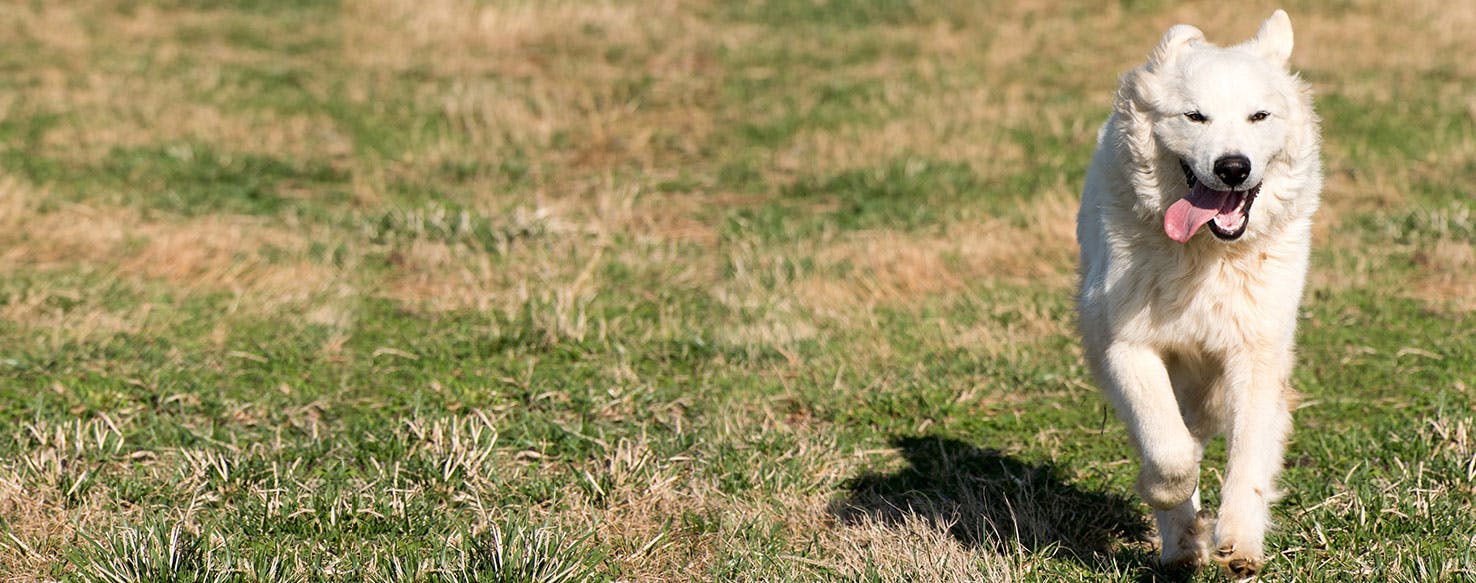- Home
- The Daily Wag!
- Behavior
- Why Do Great Pyrenees Put Their Paw On You
Why Do Great Pyrenees Put Their Paw On You

Common
Normal
Introduction
Our dogs lack verbal communication skills so if there is something they want to convey to us, they have to resort to using their body. If you have had your dog for some time now and you have been observing this body language, he can be very adorable. He will lick your face if he wants to convey his adoration for you. If he is confused about what is going on, he may tilt his head to one side. Another nonverbal communication by dogs is putting their paw on you. Pawing tends to indicate a desire for something, be it playtime sessions outside of the house or some of the delicious treats which you are keeping.
The Root of the Behavior
The paw is just one part of your dog’s body, but it can be used several ways to convey different things. The earlier you are oriented with these ways, the better you will be able to understand the actions of your Great Pyrenees. When your beloved pooch raises his paws to show as if he wants something, this is his way of getting your whole attention. When he elevates his paws, it makes him very hard to miss. This can be likened to a student raising his hand in class to get his teacher’s attention. It is your dog’s way of saying, “I’m right here!” It is important to observe your dog’s posture so that you can figure out if he is raising his paws because he wants something from you or he needs something totally different. At times it can be because your Great Pyrenees is apprehensive.
If your dog is confused, not sure about something, or worried, he may put his paws up and his body weight is all focused on the back of his physique. A raised paw in dog language can signal stress. Look at the rest of his body language. Is he yawning? Are his ears flat? Is he smacking his lips? If so, think of the possible reasons why he might feel that way. Did you scold him? Did you or somebody else shout at him? The best thing you can do if your dog is stressed or worried is to distract him from what he is thinking and a great way to do this is to bring out a toy and play with him or take your dog out for a walk to change the environment. However, refrain from consoling or comforting your dog because this might reinforce to him that there is something to worry about.
Need advice about your pet's health?
Get answers fast from a veterinary professional 24/7 in the Wag! App.
Get Vet ChatEncouraging the Behavior
Although pawing might seem sweet, sometimes the last thing you want is a dirty paw on you, particularly if you are wearing delicate fabrics. There are a few ways to tackle this problem and one is to ignore pawing. Do not make eye contact with your dog and move your body so that he will be unable to reach you. Once he stops pawing, you can lavish him treats and praise. Be consistent and refrain from confusing your dog. If you want him to stop pawing, you should never give him any attention whenever he does. If you notice your Great Pyrenees frequently paws when he wants something from you, you should try to see his needs before you sit down to relax.
It is possible that he is not getting adequate mental stimulation and exercise, so you must make time for that. Distraction can also be useful at times and in order to do this, you need the right kind of toys and treats. Be careful when buying toys for your dogs. Avoid those with small parts that he can easily swallow and avoid toys that can easily be broken down into pieces because they can be choking hazards. The last thing you want is to bring your dog to the veterinarian for an operation. If your canine puts his paw on you when you are petting him, get him in a position where it will be harder for him to paw you. For example, if your dog is lying down, try to stand up so he can’t reach you.
Other Solutions and Considerations
There is a notion that if dogs put their paw on you, it may mean that they are telling you that they are your master and not the other way around. In other words, some people believe he is trying to show his dominance over you. This notion is already outdated but you will be surprised that a lot of people still believe this. The next time your dog puts his paw on you, you must observe his body language, as well as his expression. Look at him. Does he look like he wants to put you in place? Or are the reasons already given above more realistic?
Conclusion
Learning to speak dog language by understanding your dog’s behavior is very helpful in addressing whatever issues your dog has. Pawing is just one of the many ways your dog communicates with you. Pawing is done for a variety of reasons but sometimes if it becomes too much, you might want to put a stop to it by training your dog.
Written by a Chow Chow lover Jhoana Carla de Toro
Veterinary reviewed by:
Published: 05/01/2018, edited: 01/30/2020
More articles by Jhoana Carla de Toro
